Illustrated Journey Through the Tea Countries of China - 1852
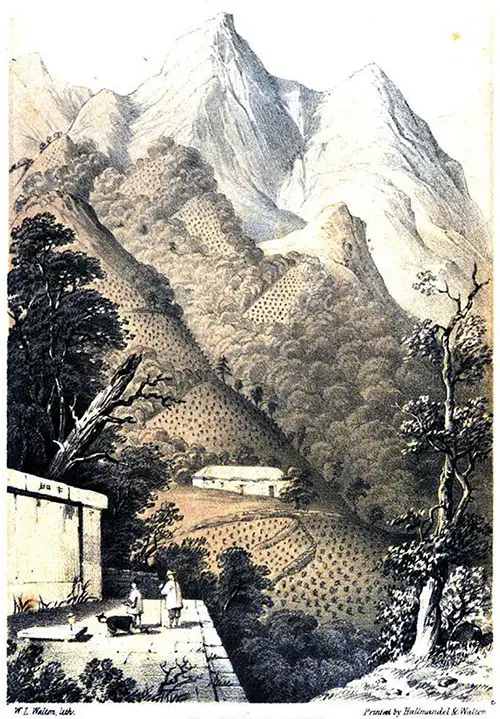
Tea Plantations. View in the Green Tea District.
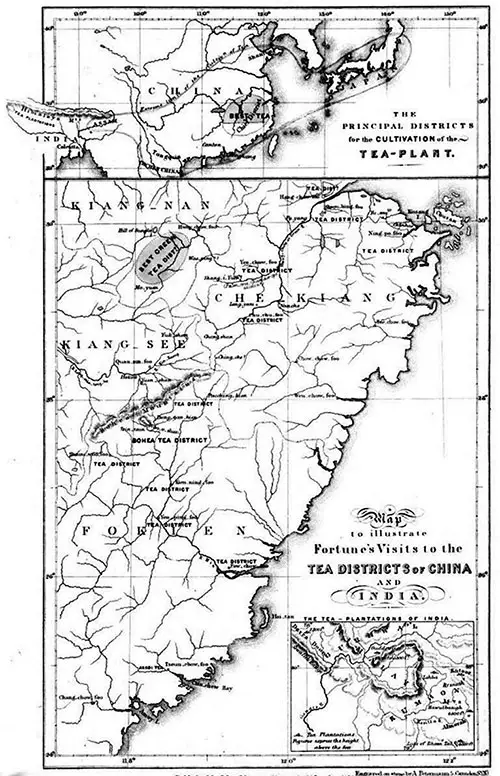
The Principal Districts for the Cultivation of the Tea Plant to Illustrate Fortune's Visits to the Tea Districts of China and India.
It is entirely accurate that the Chinese rarely make the two kinds of tea in one district, but this is more for the sake of convenience and from custom than for any other reason.
The workmen, too, generally make that kind of tea best with which they have had most practice. But while this is usually the case in the great tea districts, there are some exceptions.
It is now well known that the fine Moning districts near the Poyang Lake, which are daily rising in importance on account of the superior character of their black teas, formerly produced nothing else but green teas.
At Canton green and black teas are made from the Thea bohea at the pleasure of the manufacturer, and according to demand.

Curious Mode of Gathering the “Ling” near Kea-Hing-Foo
The water is very shallow, and a great part of it is covered with the Trapabicornis—a plant called “ling” by the Chinese. It produces a fruit of a very peculiar shape, resembling the head and horns of a bullock, and is highly esteemed in all parts of the empire. There are three distinct species or varieties, one of which has fruit of a beautiful red color.
Women and boys were sailing about on all parts of the lake, in tubs of the same size and form as the common washing-tubs, gathering the fruit of the ling, without injuring the plant.
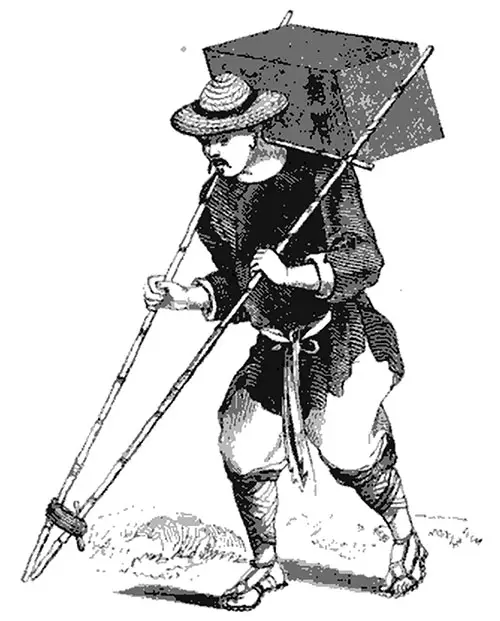
Mode of Carrying the Finest Tea Across the Bohea Mountains
Coolies were now met in great numbers, loaded with tea-chests. Many of them carried only one chest. These were the finer teas; the chest was never allowed to touch the ground during the journey, and hence these teas generally arrive at their destination in much better order than the coarser kinds.
The single chests were carried in the following manner. Two bamboos, each about seven feet long, had their ends lashed firmly to the chest, one on each side. The other ends were brought together, so as to form a triangle.
By this means a man could carry the chest upon his shoulders, with his head between the bamboos in the center of the triangle. A small piece of wood was lashed under the chest, to give it an easy seat upon the shoulders.
When the coolie who carried his burden in this way wanted to rest, he placed the end of the bamboos upon the ground and raised them to the perpendicular. The whole weight now rested upon the ground and could be kept in this position without any exertion.
This was very convenient in coming up the steep passes amongst the mountains, for in some of them the coolies can only proceed a few yards at a time without resting, and if they had not a contrivance of this description the loads would have to be frequently put down upon the ground.
When stopping at inns or tea-shops for refreshment, the chests carried in this way are set up against a wall, and rest upon the ends of the bamboos.
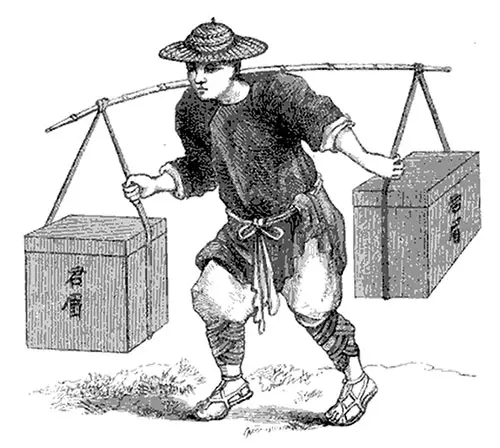
Mode of Carrying Common Tea
All the low-priced teas are carried across in the common way; that is, each coolie, with a bamboo across his shoulders, carries two chests, one being slung from each end of the bamboo.
Whenever he rests, either on the road or at the inn, the chests are set down upon the ground, and consequently get soiled, and do not arrive at their destination in as good order as those carried in the other way.
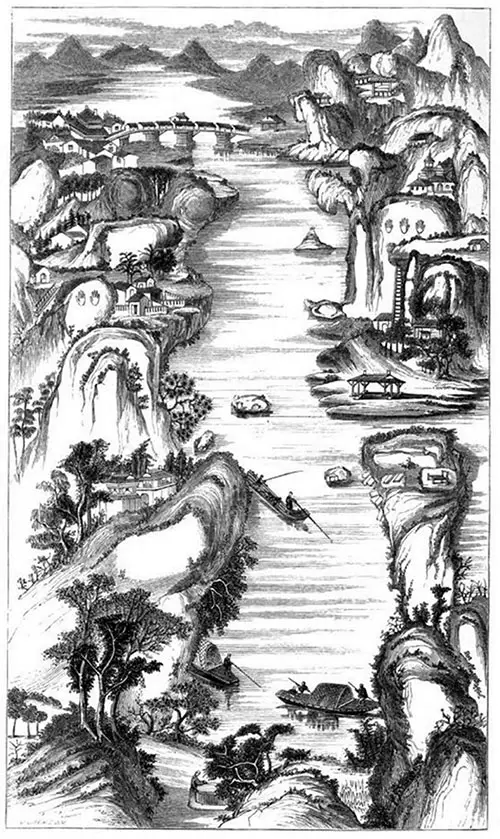
Chinese Bird’s Eye View of the “Stream of Nine Windings”
This stream is called by the Chinese the river or stream of nine windings, from the circuitous turns which it takes amongst the hills of Woo-e-shan. It divides the range into two districts—the north and south: the north range is said to produce the best teas.
Here the finest souchongs and pekoes are produced, but these rarely find their way to Europe, or only in very small quantities.
Robert Fortune, A Journey to the Tea Countries of Chica, London: John Murray, 1852.
